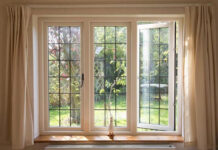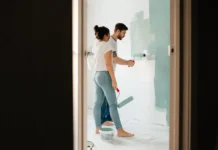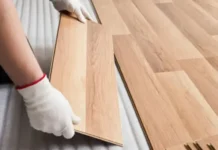Drywalls are an excellent alternative to plastered and troweled walls. Most drywall panels are made using gypsum, holding it together between hard paper or glass fiber, and drying it to a rigid and robust material.
When the drywall is fixed to a wall, it is taped at joints and mudded to conceal the joints and all screw and fastener heads. It is therefore essential to prime and paints the walls for a uniform and clean surface.
Why do we use a primer before painting the walls?
Because dry walls are made of paper and gypsum, the division may soak in paint, causing you to apply many coats and thus costing you more on labour and the prize of buying paint. HomeGardenGuides says It is therefore essential to start with a primer to ease the burden of repainting severally.
When the paint is used directly with no primer, the gypsum boards will absorb the paint unevenly. This leaves a trail of overpainted patches while others are under painted; this is known as flashing. One can only apply as many coats until the surface is informed or even time and cost-friendly start with a primer to overcome this condition.
The primer helps attain a neutral-colored surface. You will note that there will be a difference in color between the mudding and the board once you apply the primer to an almost uniform color. To attain a higher uniformity, we advise that you look for a good quality primer.
The primer will equalize porosity. The primer can only equalize the difference inboard and mudding absorption of paint. This will, in the end, directly affect the end outcome of the painting quality.
We recommend that you work with a primer or sealer that easily complements your final painting. This will come a long way in the end product as the primer, and the paint will easily complement each other leaving behind no traces or spots.
Once you have known all you need to know about drywall, here are few things you need to know about paint.
Go all-in with your favorite colors. Do not hold back when choosing a color for your room. Paint is inexpensive, and you can easily repaint your room or wall in the future if the need arises.
Test your colors. You can start by painting small boxes to understand the result of the paint once it’s all dried off. Remember, drywalls have colors that may look appealing in small boxes but look totally different when painted in large spaces.
Determine the amount of paint depending on the size of the wall or walls to be painted. In as much as you can run to the store to get more color, it would be convenient to buy the right amount of paint, again you do not want to be left with so much extra.
Keenly clean your rollers or brushes before painting. Be sure to check that no bristles are falling off from your meeting. After all, painting is an art, and your tools have to be in order.
Choose the right kind of paint. There are oil-based paints and water-based paints. We recommend water-based paints for non-metallic surfaces and oil-based for metal surfaces. Also, kindly be on the lookout for the final texture once the paint is all dried up.
A colorful living or working space will positively affect your life. A good combination of; incredibly drywall in-designed drywall and quality paint can easily transform any wall into a work of art. Take time to think about the kind of walls you want to have and plan ahead. You might be surprised at how drywalls are soothing.
Why drywall
Pros
Drywall are fire-resistant – In case of a fire emergency, drywalls will help in the mitigation of the fire. Gypsum is not fire-friendly, thus reducing the risk of spreading fire.
Drywall is versatile – Drywall can be used as partition walls, regular walls, or even ceilings. They are easy and friendly to construct and can be designed for different shapes and sizes.
Cost-effective – Putting up a wall consumes less time and labor as opposed to regular walls. This, in turn, affects the cost downwards.
Great for design – Are easy to design, and one can use the dry walls to hide lighting; this results in a beautiful background.
Energy effective – Drywalls help retain the temperatures of your room as they are good insulators.
Cons of drywall
Drywall is easily destroyed by water. Water will quickly soak in and destroy the boards; therefore, it is not advisable to use drywalls in wet areas like the bathrooms and kitchens.
Drywall can easily be damaged by impact. You are likely to have holes in places where a wall comes into contact with hard objects, the tapings will rip off. However, they are easy to repair.
Must Read : How to Hire a Painter for Your Home: A Basic Guide



































































